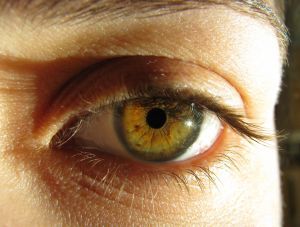Sarah, 49, put off the decision for months. When friends found out she had voluntarily turned in her driver’s license, they assumed it was because of the weakness on one side of her body after a stroke. It wasn’t. She quit driving because of a disorder known as hemianopia.
Description
Hemianopia is a visual problem. Individuals who suffer from it experience blindness or a reduction in vision in half their visual field, according to Lighthouse International. The disorder can affect one or both eyes.
Doctors also refer to the condition as hemianopsia, Hemianopsia.net reports.
Causes
The cause of hemianopia is always damage to the optic pathways in the brain. The most common reasons for damage are stroke, trauma and tumor.
When a patient has a stroke, interrupted blood flow to the brain related to a blood clot or a leaking blood vessel can damage a group of nerve cells in that organ. Strokes can cause coma, paralysis, dementia and problems with speech and vision. The effects are tied to the exact area of the brain that sustains damage.
Types
Of the several types of this disorder, the most common is right homonymous hemianopia. This defect affects the corresponding halves of the right field of vision in each eye. When the condition affects corresponding halves in the left field of vision, it’s called left homonymous hemianopia.
In superior hemianopia, patients are missing the upper half of the visual field in each eye. When they’ve lost the lower half, the disorder is known as inferior hemianopia.
Symptoms
In addition to losing half of one of the fields of vision, a patient with this disorder typically experiences decreased night vision. Most patients express a continual need for more light.
According to Science Daily, more than a million people have hemianopia. At least 22 states prohibit them from driving since they can’t meet the visual field requirements for getting a license.
Patients with this disorder often don’t realize what they can’t see. As a result, they bump into things and trip over objects while walking.
A simulated driving study performed by scientists at the Schepens Eye Research Institute showed that these patients experienced significantly more trouble detecting pedestrians on their blind side that individuals with normal sight do. The results of this study, reported in November of 2009, contrast significantly with those of on-road studies that concluded it was safe for most individuals with hemianopia to drive.
Treatment
There is no cure for this disorder. Nor is there any particular medical or surgical treatment for hemianopia. In some cases, patients are able to use their remaining vision more effectively as time passes.
Some individuals find using specially designed devices helpful as far as increasing their field of vision. The most common are magnifiers and field-expanding prisms.
Once a patient receives a diagnosis of hemianopia, it’s important to receive an evaluation from a low-vision specialist. He or she can prescribe potentially helpful visual aids. This practitioner can also refer patients to a vision rehabilitation specialist, who will teach them how to best take advantage of their remaining sight.
Sources:
http://www.lighthouse.org/about-low-vision-blindness/vision-disorders/hemianopia/
http://www.hemianopsia.net/
http://www.sciencedaily.com/releases/2009/11/091112103421.htm





